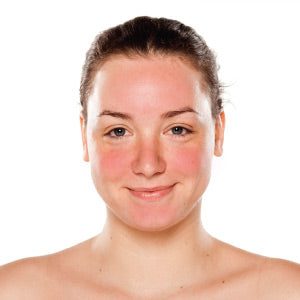Masks for Masks
A friend recently reached out to ask about mask productions on behalf of someone in the business. Halfway through the conversation, we realized that she was not talking about the hydrating sheet masks or face masks but rather, about protection masks (PPEs- like the N95 or three-ply dental masks) for COVID19!
The word “mask” has exploded on search terms and in the media lately with what’s been going on with corona, so today, I want to talk about (sheet/ face) masks for (protective) masks!
I’ve been in Seoul, Korea the last two months and EVERYONE has been wearing protection masks to shield their face, especially since we are past the lockdown phase here and a high percentage of people have returned (albeit slowly) to fairly normal lives. The idea is to create an extra layer of barrier to prevent the spread of contamination- both from lowering the chance of passing and catching germs including coronavirus that travel through droplets. Earlier in the US, whether one should or should not wear masks was up for debate, but it’s becoming more commonplace across the cities. I’m sitting in a fairly well occupied cafe as I write this but the staff have been turning away anyone not wearing one of these masks.
While these masks serve as preventative equipment, there are unintended side effects that affect your skin. A few weeks into wearing these masks regularly, I started getting itchy on the areas where the mask touched my face, and soon enough, I started seeing a breakout right along the outline of the masks!
You’ve seen the pictures of healthcare workers who have had to wear tight fitting masks for long periods. They have sores, skin tears, indentations from wearing PPEs for hours. While it provides an extra layer of protection, wearing these tight masks will increase dryness, irritate sensitive skin, and can cause acne. Studies also show that this can increase risk for developing infections of the skin (bacterial, fungal, viral) from poor barrier function and open sores. And when you have damaged skin, the masks may not seal properly, increasing exposure to the coronavirus. Over 97% of healthcare workers on the frontline will experience skin issues!

If you are dealing with this or know someone who is, please take a Mask Moment! The friction from the PPE (masks and goggles too) along with the humidity trapped inside the mask makes your skin drier. The fact that the weather has been changing (aka allergy season) does not help!
For relief, the idea is to focus on strengthening skin barrier, hydrating your skin and relieving inflammation and redness.
Here are the DO’s and DON’Ts!
DO NOT:
- Wear heavy makeup. Instead, skip the heavy foundation that can clog pores and worsen acne.
- Sleep in makeup and be sure to remove it as soon as you can. (This is true for all times, actually!)
- Exfoliate too hard but go easy on the overly physical kind of exfoliation. The friction from the masks can cause microtears in the epidermis and you don’t want to be exacerbating the area with scrubs or gommages. I would stick to enzyme washes if you must exfoliate.
- Touch your face!! And please wash your hands before applying anything!
- Put on anything you might be sensitive to. Even if you use it in your normal skincare routine, this may be the time to take a break from retinoids or hydroxy acids or strong vitamin C’s. You can always come back to them once you recover but avoid anything you are sensitive to during this time.
DO:
- Use hydrating serums with active ingredients, morning and night!
- Lubricate the area with petroleum jelly before putting on protective gear.
- Frequently apply an occlusive agent (lotions, moisturizers, oils) to prevent water loss.
- Remember to apply lip balm for chapped lips.
- Use Mask Moments for hydration, restoration, relief from inflammation and redness. Our masks have ALL the ingredients that are your best friends right now: glycerin, hyaluronic acid, vitamin B5. And both the niacinamide and biocellulose (coconut jelly) will help reduce inflammation and redness.
Know any healthcare worker who can use Mask Moments? Nominate a hero to thank them for their service and we will select a winner everyday throughout the rest of April to receive a FREE mask to offer some relief as a sign of appreciation!
Here’s how it works:
- Follow our IG account @maskmoments and tag your hero in the healthcare field on our post.
- Have them FOLLOW our account. Increase your chance by DMing us your stories and pictures. Multiple people voting for the same person will also count towards the entry.
